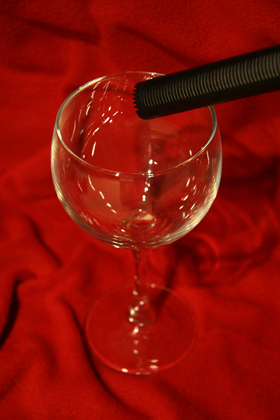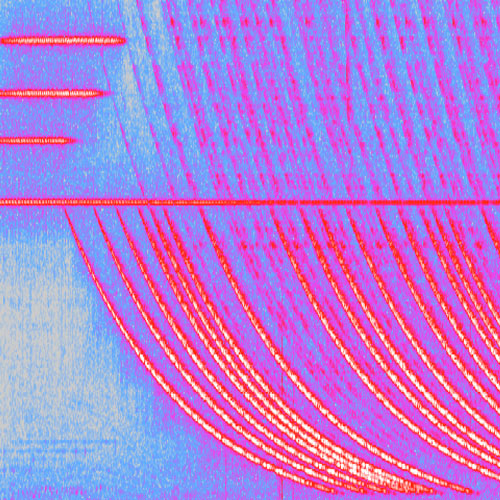
Sennheiser, vintage 2009
Here’s a little journey into the rich acoustic world of the humble wine glass. In this clip (an abbreviated study from a longer composition) I’ve taken the sound of my moistened finger running along the rim of a wine glass, and transformed the scales of time and frequency to highlight some of the delicious details of singing glass.
Here I’ve layered a series of smoothly varying time-stretched recordings atop one another, in fixed harmonic proportions. The tones of the singing wine glass descend in an apparently endless waterfall (an effect known as the Shepard-Risset glissando.[1] This motion magnifies the subtle shimmering of the glass, as the shifting harmonics play off each other in unusual ways. Sometimes the glass seems to breathe audibly; sometimes it rings. Yet its sound always remains distinctively “glassy”.

Spectrogram of a portion of this clip.
This slow bottomless cascade of sound reminds me of the circular shape of the wine glass itself, as well as the tiny circular paths traced by the molecules of silica as each passing wave of sound continues on its long circumnavigating voyage along the rim. Circles within circles within circles: each one a continuous unbounded contour in space and time, possessing neither beginning nor end, driven by the laws of physics, and bursting with the possibilities of motion.
All this — from simply listening to a finger touching glass.
An excerpt of this piece was used (with permission) in a 2012 video by Colectivo Negativo a Portuguese group of street performance and installation artists:
Note
- 1.
- For more about the Shepard-Risset glissando, see these Wikipedia articles: Shepard Tone and Jean-Claude Risset.